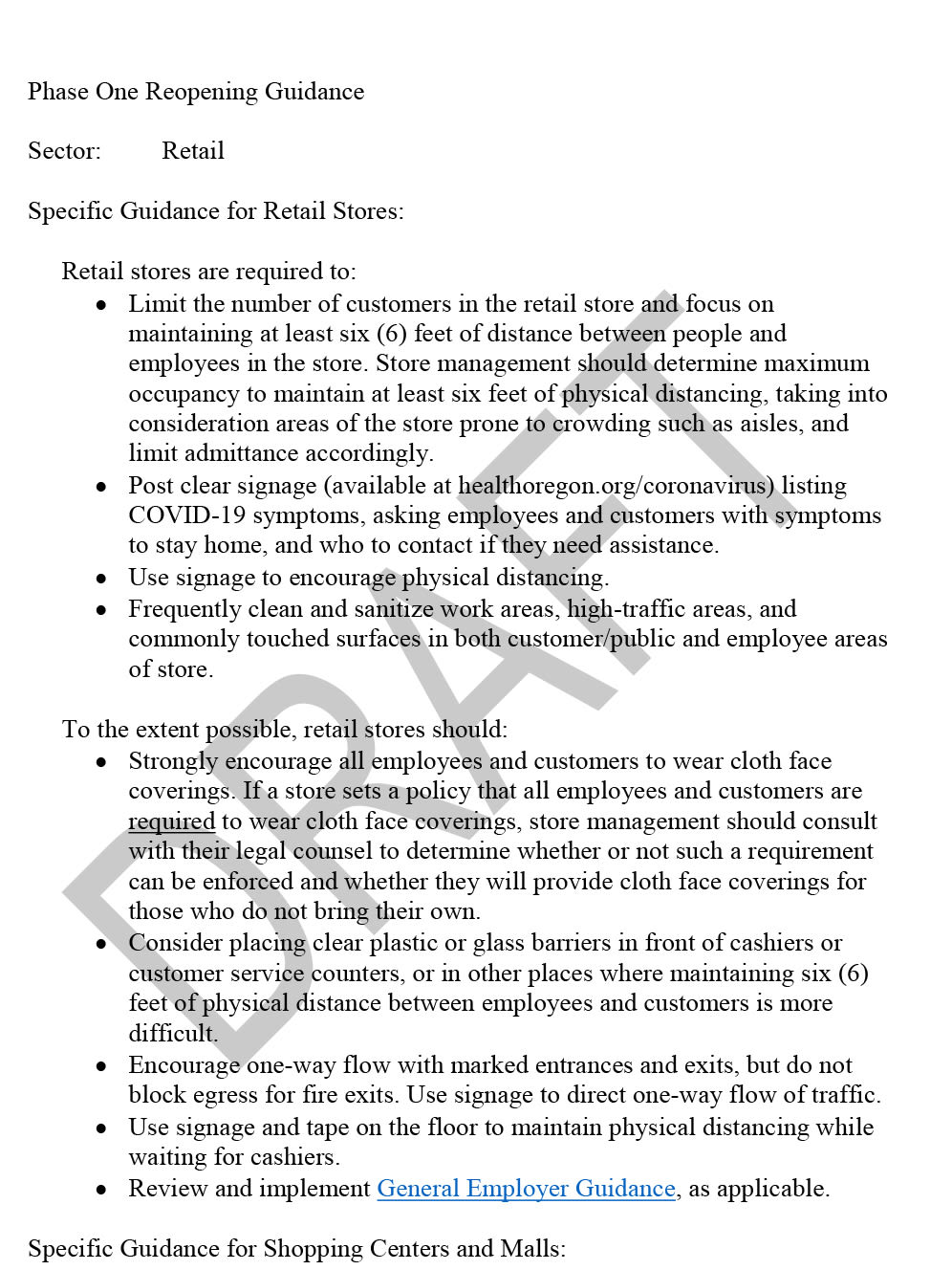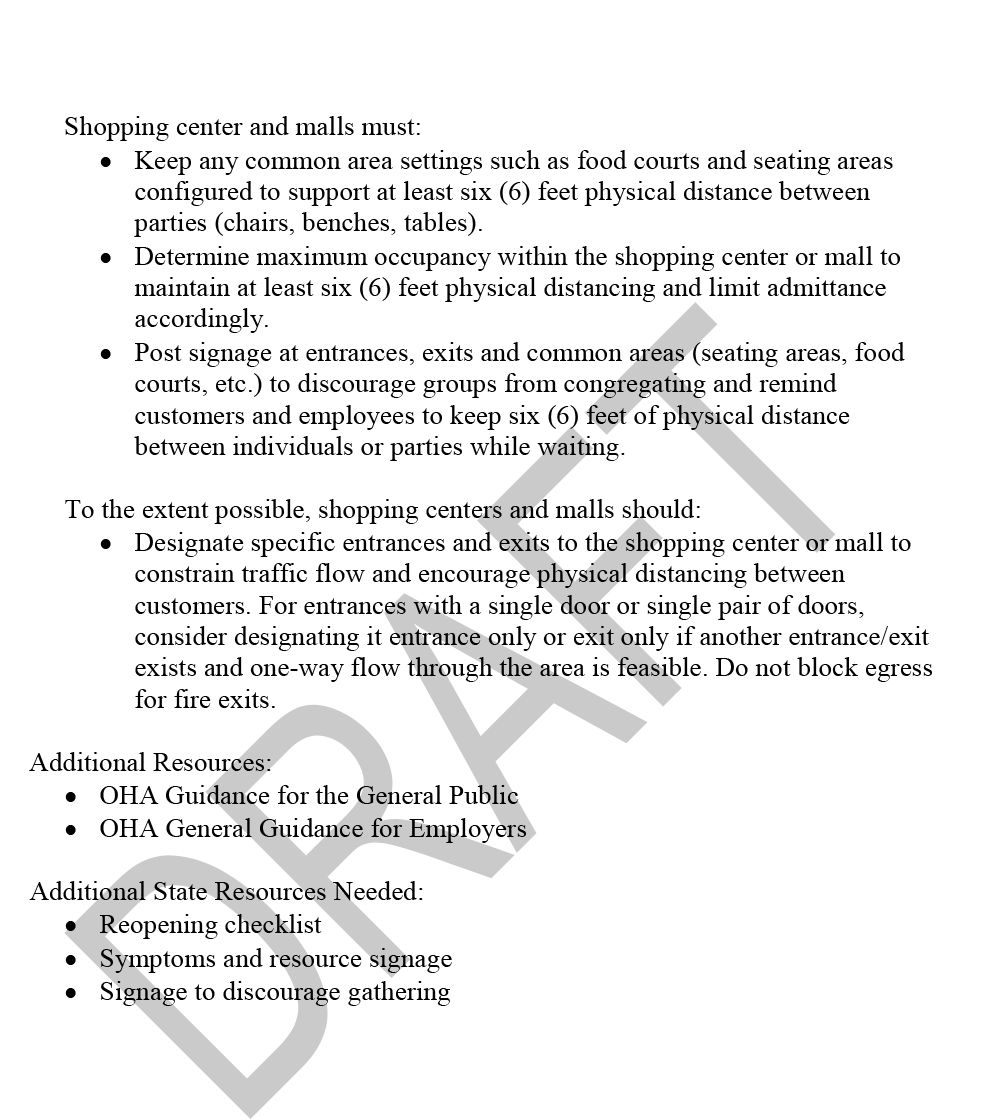What Will Oregon Shops Need to Do When They Reopen?

In order to reopen to walk-in customers, retail stores across Oregon might have to limit the number of shoppers who can be allowed in at the same time, in order to maintain a six-foot buffer for employees. That's according to a draft of Gov. Kate Brown's Retail Industry Sector Recommendations, obtained from multiple sources by Portland Monthly. (Full text below)
Under the proposed rules, retail stores would also be required to:
- Make sure their visual merchandising displays allow for a six-foot buffer and display signage to encourage customers to maintain their distance.
- Display signage that lists COVID-19 symptoms, asks employees and shoppers with symptoms to stay home, and gives resources for those who need help.
- Frequently sanitize high-traffic areas, common areas and high-touch surfaces in both front and back of shop for employees and customers.
Those guidelines seem in accordance with Gov. Kate Brown's public health framework for reopening select businesses as here. Additionally, the draft goes on to "highly encourage" other health enforcing measures, such as strongly advising all employees and shoppers to wear masks.
If stores announce a mask required policy, such as New Seasons recently did, store management should be prepared to consult with lawyers on the enforceability of such a requirement, and "whether they will provide cloth face coverings for those who do not bring their own."
The draft also encourages shops to put up plastic or glass barriers at cashier stations or any other spot where interaction is inevitable. They should also encourage one-way flow with the traffic clearly marked and utilize tape and other markers to guide shoppers. There are special additional guidelines for shopping malls in regards to keeping six feet of space for food courts and to stop groups trying to congregate.
Some notable unanswered questions: What to do with apparel items? If shoppers try on clothing and don't purchase it, what needs to happen with those items? Would the guidelines for clothing be different than, for example, jewelry with its hard surfaces? Will these policy decisions be left to shops or will the state advise in later drafts?
And an even bigger question: Will shops already battered by the economic collapse due to the pandemic be able to survive when they're limited to a fraction of their former customer base?






